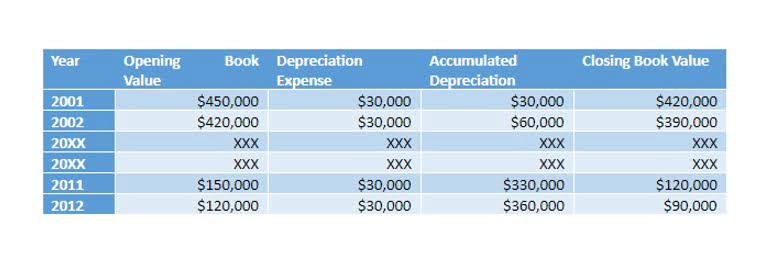
Privately-held business owners face financial and personal challenges when contemplating how to best preserve precious assets for future management and generations. Cash is key to grow and expand your business as the industry evolves, especially as businesses look to grow their e-commerce, retail sales, and direct-to-consumer presence. Knowing your cash flow can help you proactively plan for the next phase of your business and free you from worries that you won’t have the resources to execute your vision. How you structure your entities and the accounting methods you select fundamentally impact your tax planning. Invest time up front on those decisions to help mitigate your tax bill and protect and make the most of your assets. Winery QuickBooks and vineyard business owners can benefit from performing a detailed analysis of their company’s specific situation to determine which, if any, actions to take.

Private Client Services

Although preventive controls are essential, detective controls can also be helpful for wineries storing wine in bonded warehouses. For example, if the bonded warehouse is responsible for paying excise taxes, winery personnel should follow up with the tax authorities to make certain that taxes have been paid. Periodic physical inventory counts of bottles stored at bonded warehouses can also help to detect inventory theft.
- Key components of wine accounting for a winery include cost of goods sold (COGS), inventory management, and production costs.
- Production costs should be allocated to the various bulk wine in the cellar based on the type of processing activity and the stage of the wine in the process.
- Simplifying the accounting of the overall business isn’t the only advantage for a winery using the cash method of accounting.
- If you’re looking for an accounting firm who can help you grow and thrive, book a free consultation today to learn about how RHN can support you.
- By carefully managing these loans and ensuring they are repaid during peak sales times, wineries can maintain a steady cash flow without incurring excessive debt.
- Another method is Last-In, First-Out (LIFO), which assumes that the most recently produced items are sold first.
- Our performance improvement strategies will reduce expenses, stabilize cash flow, and minimize risk to increase profits so your business can grow.
Opportunities for CPAs within the Wine Industry
For example, if the area dedicated to packaging takes up to 30% of your total facility floor space, you can apportion 30% of your total rent and building insurance to package. Conversely, utilities are usually broken down by actual consumption per production stage, unless all departments are using nearly equal amounts of energy. Every employee’s wages, benefits, and payroll taxes must be accounted for and apportioned. If you operate a vineyard in addition to winery, include those labor expenses in your total labor cost. While those costs are being accounted for, it’s also vital to track the movement of your inventory.

Risk & IT Compliance
Crush and ferment costs, which may include payroll, supplies, allocated overhead, and depreciation or rent related to crush equipment, should only be allocated to the current vintage crushed. On the other hand, cellar aging costs are typically shared by all wines in the cellar. These are most commonly allocated to the wines based on a weighted https://www.facebook.com/BooksTimeInc average number of gallons in the cellar. When calculating the cost of making and selling wine, it’s typically recommended to use accounting principles generally accepted in the United States of America (U.S. GAAP).
Our performance improvement strategies will reduce expenses, stabilize cash flow, and minimize risk to increase profits so your business can grow. To make matters simpler, winery costs are broken down into specific cost categories according to steps in the winemaking process. At each stage of production, there are costs for materials, labor, and overhead. By tracking your investment and usage in these aspects of production, you form an accurate idea of the cost for the wines winery accounting you sell.
- The problem is that it can easily be a half-decade – usually longer – before it begins to produce grapes in commercial quantities.
- The big difference with accrual accounting is that it adheres to the Matching Principle, which is a cornerstone of GAAP (Generally Accepted Accounting Principles).
- Weighted Average Cost is a more generalized approach, calculating the average cost of all inventory items available for sale during the period.
- Regardless of the ease of changing your entity structure, careful analysis should be completed prior to any change to mitigate any unintended consequences.
- Their outstanding team works fast and has the soft skills needed in this business, and their efficiency and attention to detail mean I can relax and do what I love.
- There’s the growing or sourcing of grapes and products to resale, the staffing, the branding and marketing, the customer service and more.

From tapping into consumer data to exploring smoke exposure mitigation processes while protecting your personal finances, prepare your business to seamlessly confront issues and seize emerging opportunities. We’ll cover whether your winery qualifies, if it’s worth the effort, and how much you can potentially save by claiming it. If you are short on time, we prepared some of our favorite points when you need a quick read.
- This methodology offers the benefit of being measurable and verifiable based on usage.
- Inventory valuation is used to determine the value of your stock at any given time, which is important for making informed decisions about buying and selling inventory.
- Wine sales may be direct-to-consumer through tasting rooms or wine clubs, or to a third-party distributor.
- COGS includes the cost of the grapes, the cost of production, and the cost of packaging and shipping.
- Accurate inventory management ensures proper stock levels and valuation, while tracking production costs helps in pricing strategies and profit maximization.
The next step is bottling, which involves filling the bottles and adding labels and a cork or a screw-top cap. And finally, the bottles are left in storage for a period of months for further aging. Of these four steps, the crush and bottling phases are quite short, while the other two can be very long. Even though a vineyard is on the cash basis, it needs to capitalize quite a lot of its initial expenditures.

